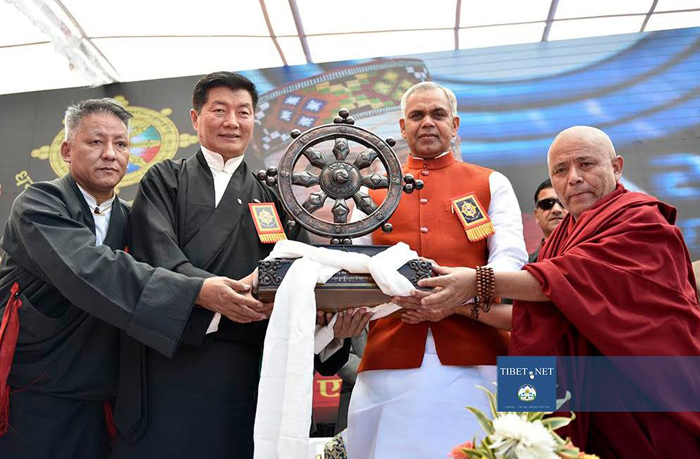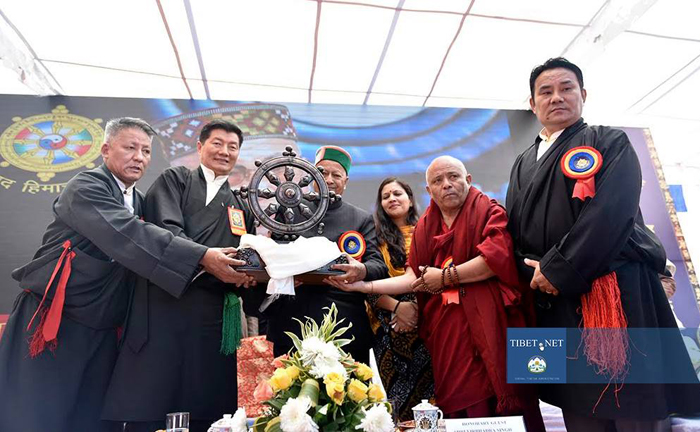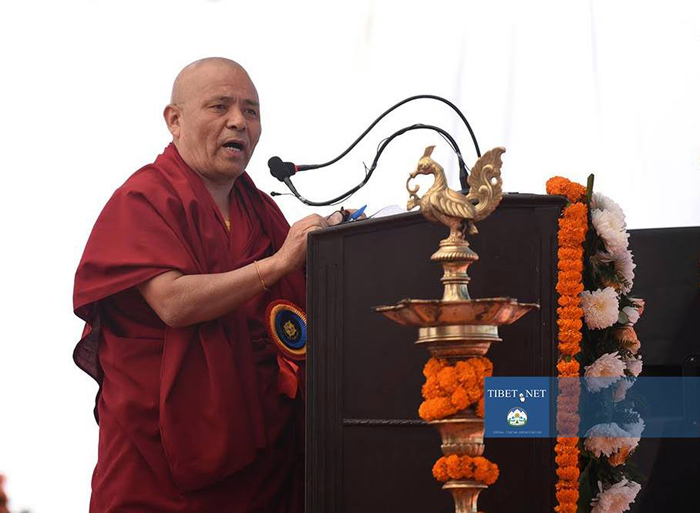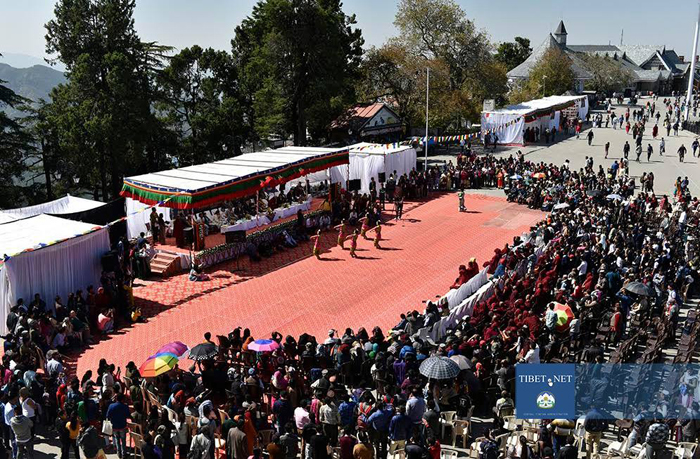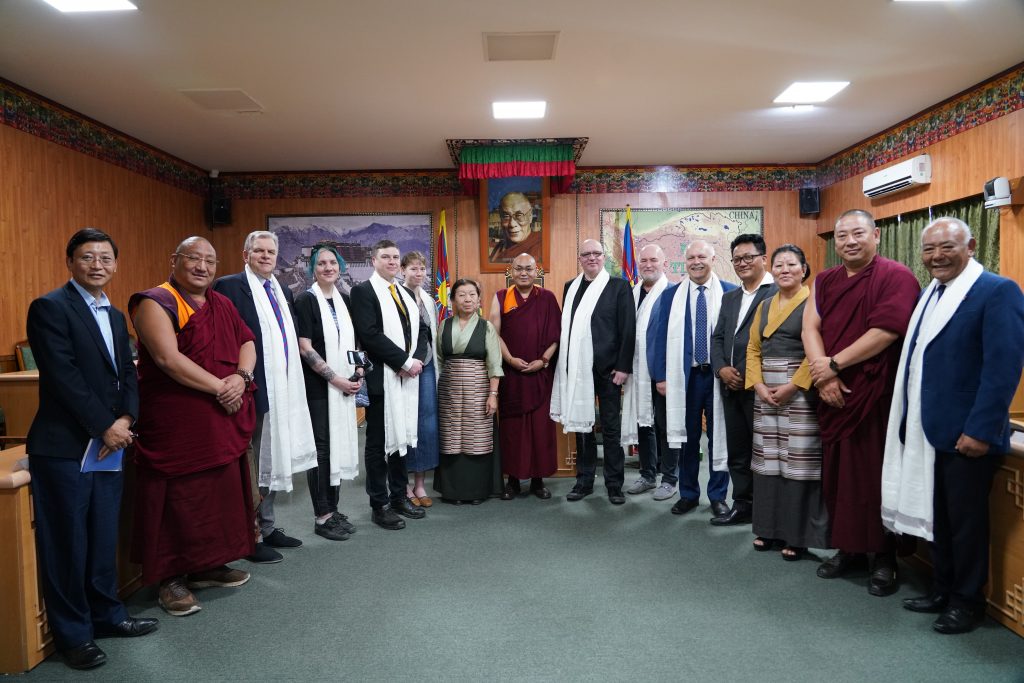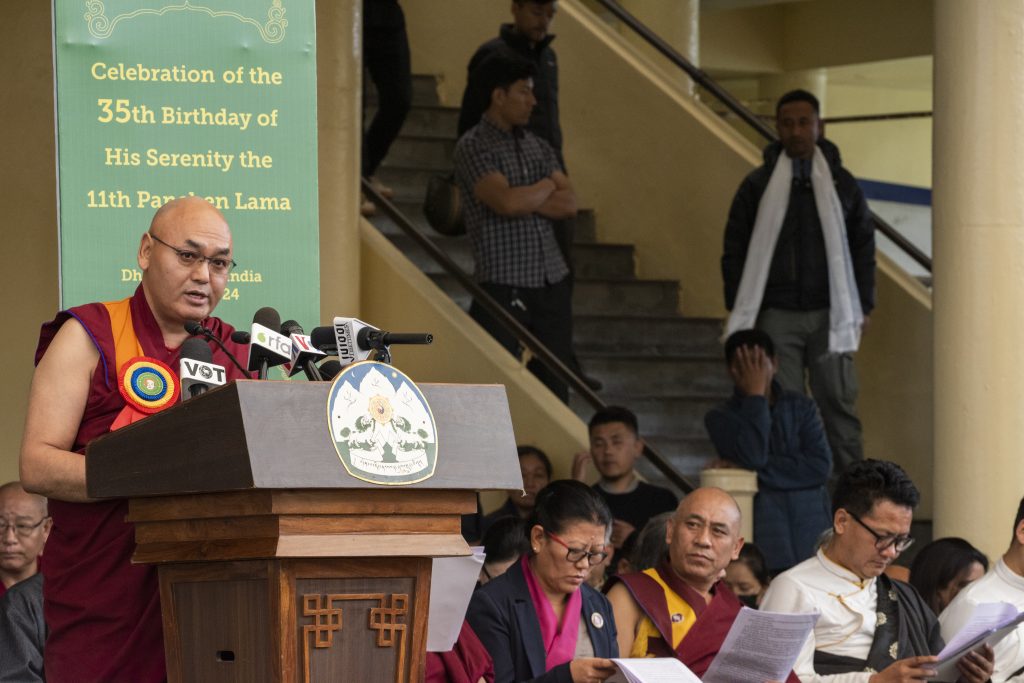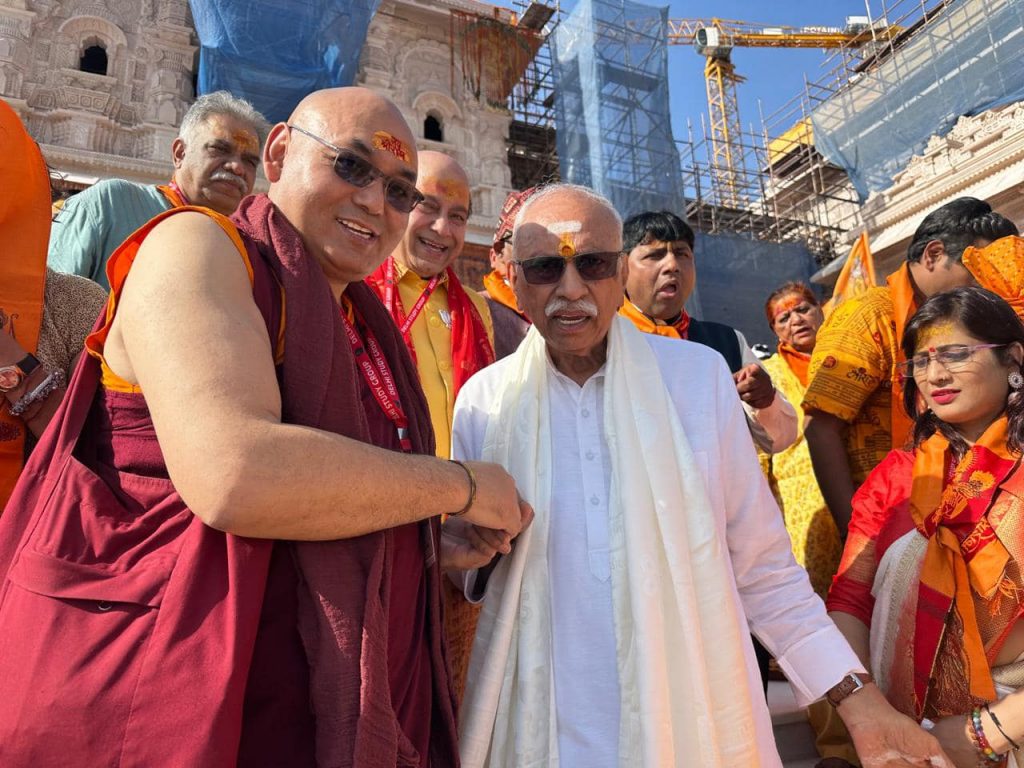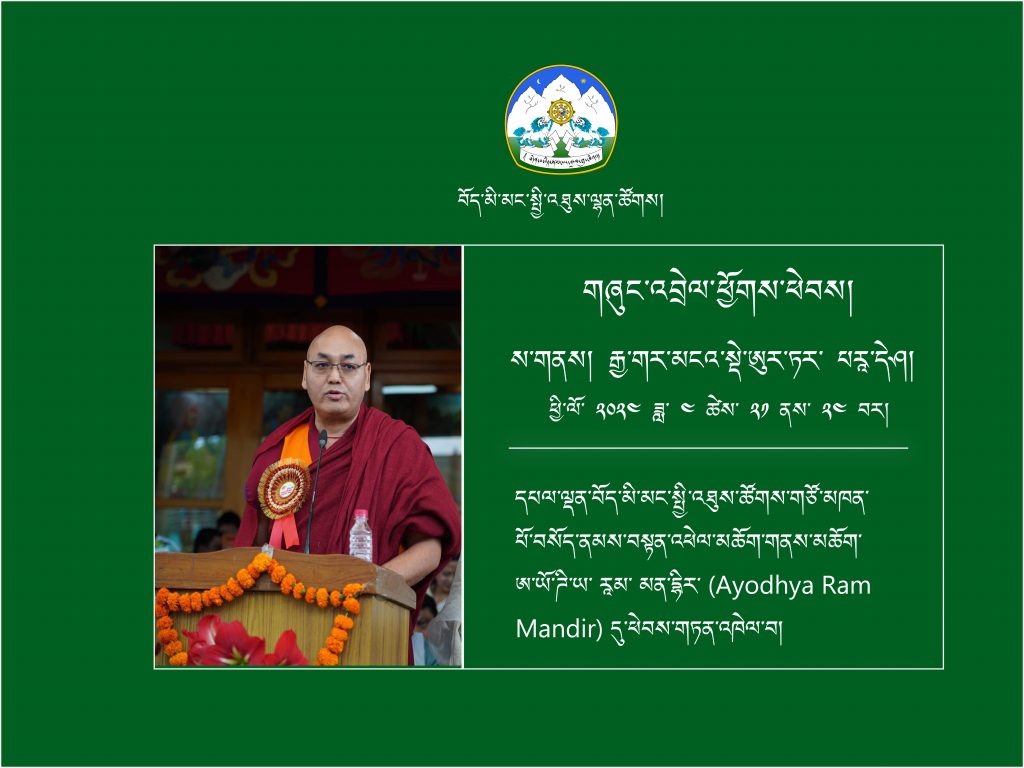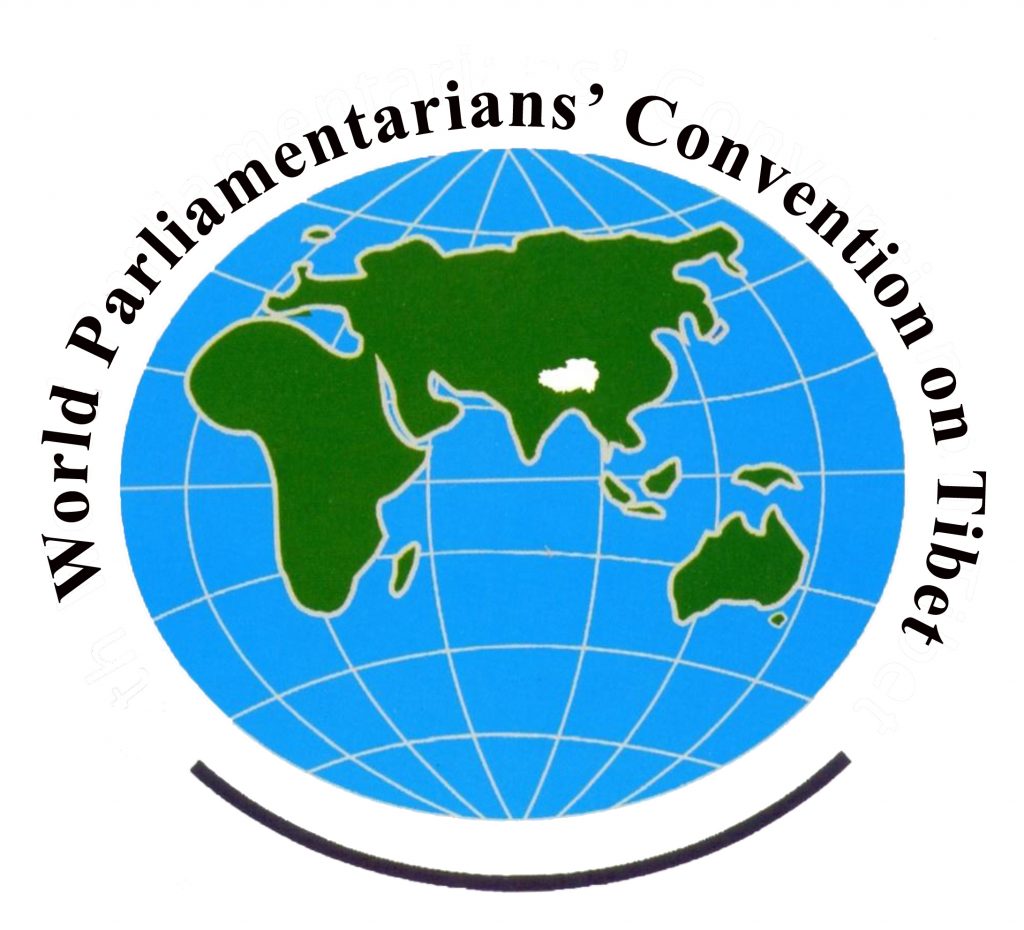Shimla: True to its reputation, The Ridge road, situated along the Mall Road, Shimla, the capital city of Himachal Pradesh, India was indeed the hub of cultural activities as evidenced by the Thank-you event on Oct 15, jointly organized by Central Tibetan Administration (CTA) and the Tibetan people in Shimla.
The celebratory event began at 10 am in the morning with a special video message from His Holiness the Dalai Lama, in which, he thanked the government of Himachal Pradesh and its people for facilitating Him and the Tibetan people over the past 60 years.
Thereafter, with the due deliverance of key-note speeches by the respective guests, Deputy Speaker Ven. Acharya Yeshi Phuntsok took the stage to address the audience.
Expressing his gratitude to the people and the government of India, on behalf of Tibetan Parliament-in-exile, for hosting and facilitating the Tibetan people, he elucidated on the centuries-old relationship between India and Tibet.
‘Indo-Tibet shared various aspects of relationships, from the two countries’ shared geographical borders to its sociocultural, language and tradition to commerce. Pandits from India and Lotsawa (translators) from Tibet traveled to and fro from the two countries from the 7th to 17th century. The relationship shared between the two is etched deeply in the history, especially with Himachal Pradesh. Satluj river, known in Tibet as Langchen Khabap, flows from Tholing in Tibet to Kinnaur and Rampur in Himachal Pradesh and Punjab. Tibet and Himachal have especially shared commercial relationship for over 333 years during the erstwhile state of Bushair. Lavi Mela (fair), which is still held Nov 25th of every year at Rampur is a testament to that centuries-old exchange. And the historic building, where the Shimla Accord in 1913-14 between China, Tibet and British India was signed, now popularly known as Indian Institute of Advanced Study, in Rashtrapati Niwas, Shimla, is yet another testament to the undeniable relationship between India-Tibet,’ said the Deputy Speaker.
He continued, ‘In 1959 when Tibet was illegally occupied by Communist China, His Holiness the Dalai Lama, along with 80,000 Tibetans fled the persecutions in Tibet into exile in India via Tawang. His Holiness the Dalai Lama initially stayed at Mussoorie and set up an exiled Tibetan administration at the northern hill station for over a year and on April 30, 1960, His Holiness’s residence along with the exiled administration was shifted to Dharamsala, which now serves as the nexus of exiled Tibetans. There are approximately over 1,40,000 Tibetans scattered across the globe, including in the Tibetan settlements in 12 different states of India and in Himachal alone, there are 14 Tibetan settlements, 17 Tibetan schools, 52 monasteries, and 5 cultural institutes and centers. There are around 17,725 Tibetans living in the 7 different districts of Himachal Pradesh.’
He further added, ‘Tibetans inside Tibet continues to protest against the atrocious policies of the Chinese government. 152 Tibetans have self-immolated in Tibet, over 12 lakhs Tibetans have been massacred and around 6000 monasteries destroyed and the annihilation of Tibetan people and its culture still continues inside Tibet today. Therefore, the compassion and hospitality rendered to the Tibetans by the people and government of India, from India’s first President Dr. Rajendra Prasad to the incumbent President Sh. Ram Nath Kovind; from first Prime Minister Pandit Jawaharlal Nehru to the incumbent Prime Minister Sh. Narendra Modi and especially from the first Governor of Himachal Pradesh Sh. S. Chakravarti to the present Governor Sh. Acharya Dev Vrat and the state’s first Chief Minister Sh. Y.S. Parmar to the present Chief Minister Sh. Jai Ram Thakur is indeed gratifying. It is due to the generosity and support of India and international communities that today, Tibet’s issues are well known across the global platform. On behalf of every Tibetans, I would like to express my heartfelt gratitude to you all for all your support and facilitation rendered to us till now over the past 59 years. I request and hope that you all will continue to render your support to the Tibetan cause until the day Tibet’s issue is resolved.’
After his speech, the event continued with its program and saw beautiful cultural performances by artists from the Tibetan Institute of Performing Arts (TIPA).
